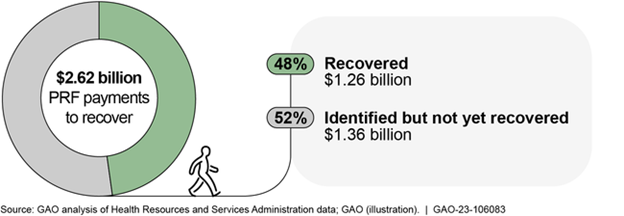MM Curator summary
The article below has been highlighted and summarized by our research team. It is provided here for member convenience as part of our Curator service.
[MM Curator Summary]: The new OR waiver will get members AC unit, food and help with rent. It puts $1B towards health-related social needs (HRSN- that’s the new SDH password ICYMI).
Oregon is moving to leverage Medicaid benefits to prevent homelessness, support behavioral health services, mitigate the impacts of climate change, pending federal approval.
Metro Creative Connection
The Oregon Health Authority (OHA is moving to leverage Medicaid benefits to prevent homelessness, support behavioral health services, mitigate the impacts of climate change, pending federal approval.
The OHA, in collaboration with Oregon Housing and Community Services (OHCS), has announced proposed timelines to begin offering new Medicaid benefits that eligible Oregon Health Plan (OHP/Medicaid) members would receive under Oregon’s ground-breaking 1115 Medicaid waiver agreement with the federal government.
If the federal government agrees to the proposal, eligible OHP members would start receiving benefits for climate-related supports in January 2024, housing insecurity in November 2024, and food insecurity in January 2025.
Oregon would be the first state in the nation to gain federal approval to offer six months of temporary rent assistance as a medically necessary Medicaid benefit. These benefits would first roll-out to people who are at risk of losing their current housing, beginning on Nov. 1, 2024, if the federal government approves the plan.
In lockstep with Governor Tina Kotek’s priority to reduce homelessness, state health officials have determined that the most immediate and effective way to implement Oregon’s new short-term Medicaid housing benefit is to help people who are medically and economically vulnerable avoid becoming homeless in the first place, according to a release from the OHA.
The rate of Oregonians losing housing is increasing faster than state and local programs can rehouse them, due to a critical statewide shortage in affordable housing, state housing experts said.
The short-term Medicaid rent assistance benefit will help prevent people from losing housing due to a health issue that disrupts their ability to stay current on their housing payments, or because they need to be connected to mental health or substance use services to maintain stable housing. The OHA said this preventive approach should help slow the rate of growth in the homeless population.
State officials estimate approximately 125,000 OHP members currently meet the federal housing definition of “at risk for homelessness” and could be eligible for the short-term housing benefit if they have health and housing needs that would require up to six months of rent assistance or other housing supports.
While assuring that these benefits help keep people housed, OHA will continue to have a strong focus on assisting OHP members that have a significant mental health or substance use disorder that exacerbates their housing insecurity.
“As a first step, we want to use these new and innovative Medicaid housing benefits to make sure that someone with a health problem stays in stable housing,” OHA’s interim Director Dave Baden said. “We can’t let more people wind up on the streets, where their health issues will worsen and get harder to treat, making sustainable, long-term housing harder to find, especially given the lack of affordable housing across the state.”
Medically necessary temporary rent assistance and other housing supports would become available to other OHP members, including people who are already homeless, later in the state’s five-year waiver implementation. That date has not been specified as state health and housing officials continue to work with federal partners to address barriers to housing access and other questions.
Input from housing providers, coordinated care organizations (CCOs) and other community voices informed the state’s strategy to focus on preventing homelessness in this first phase.
“Today’s actions build upon a longstanding commitment to addressing the social determinants of health in action,” OHCS Director Andrea said. “This historic rent assistance provision is a tangible pathway to deliver rent assistance as a health intervention. Housing and health barriers are connected. The solutions should be reflective of that reality.”
State officials also announced that climate-related supports for some OHP members will become available starting Jan. 1, 2024, if federal officials approve the proposed timelines. Under this benefit, eligible OHP members could qualify to receive air conditioners to help reduce health risks during extreme heat emergencies (if medically necessary) or air filters to protect from the respiratory effects of wildfire smoke.
Nutrition benefits, such as medically tailored meals, would become available starting Jan. 1, 2025.
Oregon’s five-year 1115 Medicaid waiver provides OHP coverage and more than $1 billion in federal funding to address the health-related social needs (HRSN) of people whose health is affected by the most pressing problems affecting Oregon communities, including homelessness, climate change and poverty. Under the state’s agreement with CMS, Oregon is required to begin making health-related social needs benefits available no later than Jan. 1, 2025.
1115 Medicaid waivers allow states flexibility to test new ways to deliver and pay for Medicaid benefits. A state must receive CMS approval to implement a waiver.
Medicaid provides health coverage to income-eligible people. Currently, more than 1.4 million Oregonians – or 1 in 3 state residents – are covered by OHP. Most people who qualify for Medicaid in Oregon are covered by OHP. Approximately nine in 10 OHP members have their care coordinated through one of 16 CCOs which operate in defined regions across the state.
Follow this developing story at curry.com and in the Wednesday print editions of The Pilot.

